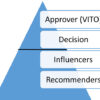By maintaining a high standard for lead data validity and regularly assessing and improving your lead generation processes, you can ensure a steady flow of high-quality leads into your sales pipeline, ultimately leading to better conversion rates and sales success.
The quality of your leads can make or break your success. As a Business Development Representative (BDR), understanding the importance of hot leads, where they come from, and how they are worked on is crucial. In this blog post, we’ll explore the origin of hot leads, the role of marketing in generating them, the factors contributing to their quality, and why BDRs should prioritize working on them.
First it’s important to set a benchmark. Hot leads can be extremely target rich but if your company is well below that average, then you may need to make the business aware.
The industry average for hot lead data validity typically ranges from 70% to 90%. This means that out of all the leads categorized as “hot,” approximately 70% to 90% are expected to be valid and responsive, leading to higher chances of conversion. This range can vary depending on the source of the leads and the effectiveness of the lead generation strategies employed.
Key Points on Lead Data Validity
- Lead Source Quality: Leads generated through inbound marketing or high-intent actions (such as webinar sign-ups, event attendance, content downloads, or demo requests) generally have higher validity rates.
- Lead Scoring: Implementing a robust lead scoring system can help in better identifying and categorizing hot leads, improving overall validity.
- Data Hygiene: Regularly cleaning and updating your lead database ensures that your contact information is accurate, contributing to higher lead validity.
Where Hot Leads Come From
Hot leads are prospects who have shown a high level of interest in your product or service and are more likely to convert into customers. These leads typically come from various sources, including:
1. Inbound Marketing Efforts
- SEO: Leads generated through search engine optimization efforts, where potential customers find your content via organic search.
- Content Marketing: Prospects who engage with your blogs, whitepapers, eBooks, and other content forms.
- Social Media: Leads from social media interactions, including likes, shares, and comments on your posts.
- Email Campaigns: Subscribers who respond to your email marketing campaigns.
2. Event Follow-Ups
- Webinars and Virtual Events: Attendees who register and participate in your webinars and virtual events.
- Trade Shows and Conferences: Contacts made during industry events and trade shows.
- Workshops and Seminars: Participants who engage in your educational sessions and workshops.
3. Paid Marketing Campaigns
- PPC Advertising: Leads generated through pay-per-click advertising on platforms like Google Ads and social media.
- Retargeting Campaigns: Prospects who have previously interacted with your website and are targeted with retargeting ads.
How Marketing Works on Hot Leads
Lead Generation
Marketing teams employ various strategies to attract and capture leads. These strategies include optimizing content for SEO, running targeted ad campaigns, creating engaging content, and hosting events.
Lead Scoring
Once leads are captured, marketing teams use lead scoring to rank prospects based on their engagement level and likelihood to convert. Factors like website visits, content downloads, email opens, and event participation contribute to the lead score.
Lead Nurturing
Marketing teams nurture hot leads through personalized email campaigns, targeted content, and continuous engagement. The goal is to maintain interest and guide prospects through the sales funnel until they are ready to be handed off to the sales team.
Factors Contributing to Lead Quality
- Engagement Level: The more a prospect engages with your content and brand, the higher their lead quality.
- Relevance: Leads that fit your ideal customer profile (ICP) are more likely to convert.
- Timeliness: The recency of a prospect’s interaction with your brand can indicate their readiness to purchase.
Top 3 Reasons Hot Leads Are Good
- Higher Conversion Rates: Hot leads have already expressed interest, making them more likely to convert into customers. According to HubSpot, inbound leads (which often constitute hot leads) close at a rate of 14.6%, compared to outbound leads at 1.7%.
- Shorter Sales Cycles: With their higher level of interest, hot leads typically require less nurturing and decision-making time, speeding up the sales process.
- Better ROI: Focusing on high-quality leads ensures that marketing and sales resources are used efficiently, leading to better returns on investment.
Top 3 Reasons Hot Leads Aren’t Always Good
- Lead Overload: An influx of hot leads can overwhelm sales teams, leading to potential neglect of some prospects.
- Misqualified Leads: Sometimes, leads may be marked as hot based on engagement metrics that don’t necessarily indicate purchase intent.
- Timing Issues: Even hot leads may not be ready to buy immediately, requiring ongoing nurturing and follow-up.
Why Hot Leads Matter to BDRs and Why They Should Work on Them
Importance to BDRs
- Efficient Use of Time: Working on hot leads ensures that BDRs spend their time on prospects with the highest likelihood of conversion.
- Increased Sales Opportunities: Hot leads are more likely to convert, increasing the number of opportunities in the sales pipeline.
- Enhanced Job Performance: Successfully converting hot leads can lead to better performance metrics and career advancement for BDRs.
Working on Hot Leads
Regardless of the challenges, BDRs should prioritize hot leads because they represent the best opportunity to meet sales targets and drive revenue. Here are some tips for effectively working on hot leads:
- Prompt Follow-Up: Contact hot leads within 24-48 hours to capitalize on their interest.
- Personalized Approach: Tailor your communication based on the lead’s interactions and preferences.
- Persistent Engagement: Keep the conversation going with timely follow-ups and relevant content to maintain their interest.
Hot leads are a valuable asset in the sales process, offering higher conversion rates, shorter sales cycles, and better ROI. While there are challenges in managing hot leads, the benefits far outweigh the drawbacks. As a BDR, focusing on hot leads can significantly enhance your effectiveness and drive success in your role. By understanding the origin of these leads, the role of marketing, and the importance of maintaining high data quality, you can optimize your efforts and achieve outstanding results.











